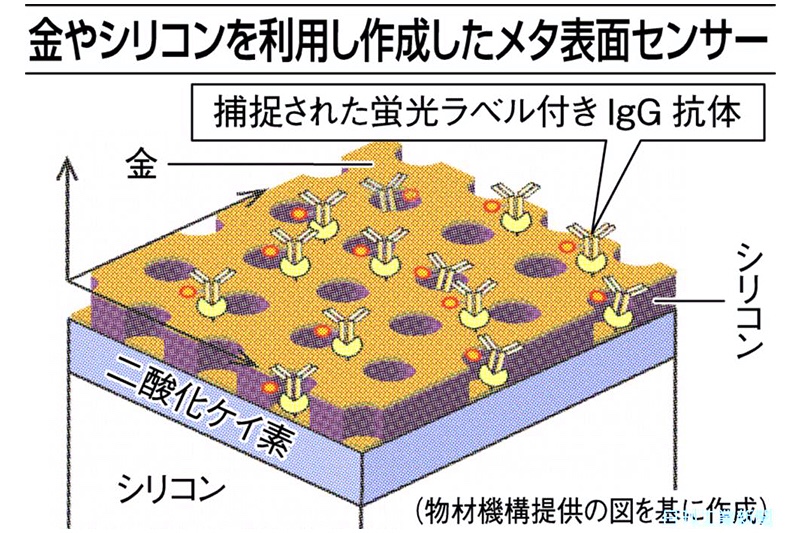
COVID-19: New tech of NIMS, applied to corona detection: Fluorescence intensity of 2600 times with nanostructure
COVID-19:
A new technology utilizing the nanostructure is being developed by the Material Organization(NIMS).
It is expected to show its power in corona detection.
Japan Institute for Materials Research: Senior Researcher Iwanaga
We have developed a “fluorescence enhancement technology that can be used to detect pathogens such as new coronaviruses and their immune antibodies.”
Development of “meta surface”:
First, the surface of the semiconductor substrate is processed into a nano-sized structure.
Furthermore, we devised a “meta surface” that enhances the fluorescence intensity.
This will increase the fluorescence intensity of the specific wavelength by 2600 times.
Applied to test kit:
When applied to a test kit, “one drop of blood (50-100 microliters of sample) can be detected within 30 minutes”
It is expected as a “method for detecting viruses and antibodies from blood and saliva with high speed and high sensitivity”.
PCR test problem: time required
Test methods such as the DNA polymerase chain reaction (PCR) method have high sensitivity but take several hours or more.
Easy Kit Problem: Detection Accuracy
Simple kits such as the influenza detection kit require a test time of 30 minutes or less, but have low sensitivity.
Research Group:
Silicon wafer surface/using a 400 nm thick silicon dioxide layer,
Fabricate a substrate with a 200 nm thick silicon plate on the surface,
Drill holes with a diameter of 300 nanometers at regular intervals in the silicon plate,
Apply gold to the entire surface.
This structure was named the metasurface.
Irradiate with laser light:
Fluorescent molecule “rhodamine” is applied to this meta surface, and green laser light is irradiated.
It was found that light with a wavelength near 680 nanometers emitted 2600 times more intensely than when it was applied to a flat silicon substrate.
Evidence of antibody detection: confirm luminescence
We manufacture a microstructured device that incorporates a meta-surface in the channel.
Antibody “IgG”, which is often produced in the human body for a long time after infection,
Pour 200 microliters of liquid containing fluorescent dye,
Upon irradiation with laser light, luminescence that is evidence of antibody detection was confirmed.
New switch
https://newswitch.jp/index.php/p/22760